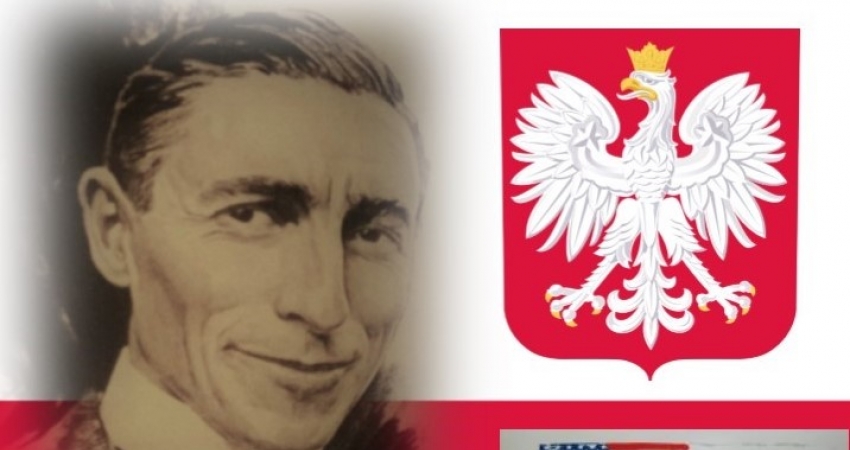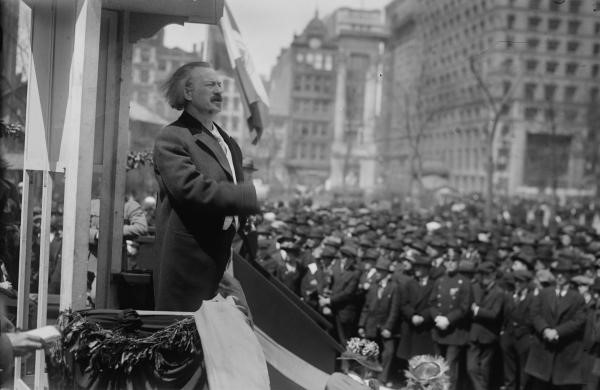
Hugh Gibson, part 2 (by Vivian Reed)
Polish Falcons led by French officers.
March 28, Paris: “On the way back [from lunch] ran into Horodyski who was in America in connection with the recruiting of the Polish Legion. He rode into the chancery with me and said he was most anxious for a good long talk.”
(fromAn American in Europe at War and Peace, DeGruyter, 2020)
Gibson arrived in Paris on March 24, 1918. His first week on the ground opened his eyes to a great many issues that were not apparent from Washington, DC. Details about Polish aspirations of statehood and the intricacies of competing Polish leadership quickly took focus. The first Pole he encountered was a “shadowy figure,” Count Jan Maria Horodyski, “who had advised Paderewski and the Polish Falcons of America for the past year on the possibility of creating a Polish Army.”[1]
Horodyski was a Galician Pole who participated the Polish Military Mission to the United States in September 1917. Although Gibson hadn’t met him at that time, he was aware of the Polish movement. Horodyski made a powerful impression on Gibson, not surprisingly, as M.M.B. Biskupski describes him as “young, ambitious, unscrupulous” but a “devout Polish patriot who, sometime in 1915, became a British agent supplying valuable intelligence regarding the labyrinthine world of nationality politics of Central Europe to the Foreign Office. In exchange, Horodyski became an ever more trusted advisor regarding things Polish in London.”[2] Per Piotr Wandycz, Horodyski orchestrated the rapprochement between Dmowski and Paderewski, and facilitated coordination between the British and Americans.[3]

Paderewski recruiting Polish-American volunteers in Pittsburg, April 1917.
Horodski was a man full of ideas and plans, and he was adept at pitching those ideas to the powerful persons in a position to take action. One such plan was particularly evocative. Paul Latawski published Horodski’s master plan to “Set Europe Ablaze” in 1987.[4]Gibson learned to look forward to hearing Horodyski’s plots, with a grain of salt, of course. However, the two men worked together throughout the war for the betterment of Polish prospects.
Please look for the next post on (date) for the details of Gibson first official meeting with Horodyski. Until then, stay well and thrive!
Vivian
Links and documentation:
http://pffamerica.org/en/presents/falcons-of-freedom/
http://www.polishfalcons79southgate.com/pb/wp_3fa44884/wp_3fa44884.html
https://explorepahistory.com/displayimage.php?imgId=1-2-1E4A
[1]Hapak, Joseph T. “The Polish Military Mission, 1917-1919,” Polish American Studies(Vol. 38, No. 2, Autumn 1981) p 26.
[2]Biskupski, M.M.B. “Canada and the Creation of a Polish Army, 1914-1918,” The Polish Review(Vol. 44, Autumn 1981, 1999), p. 351.
[3]Wandycz, Piotr. The United States and Poland(Cambridge: Harvard University Press, 1980), pp.116-118. Details on Horodyski’s role in the Polish Mission to the US can also be found in Bułhak, Władysław, “Lednicki, Paderewski, Dmowski. The Mission Case of Stanisław Gutowski and Polish Genesis of the National Executive Committee and Polish National Committee (August-September 1917)
[4]Latwaski, Paul. “Count Horodyski’s Plan to ‘Set Europe Ablaze’ June 1918 (The Slavonic and East European Review (Vol. 65, No. 3, July 1987), pp. 391-398.